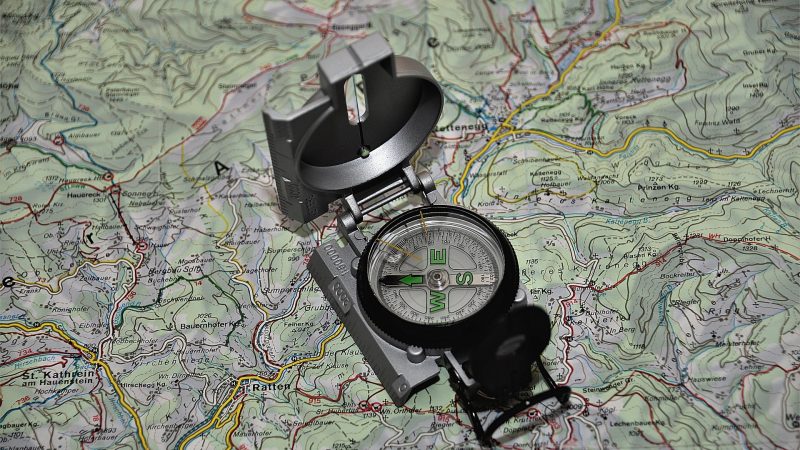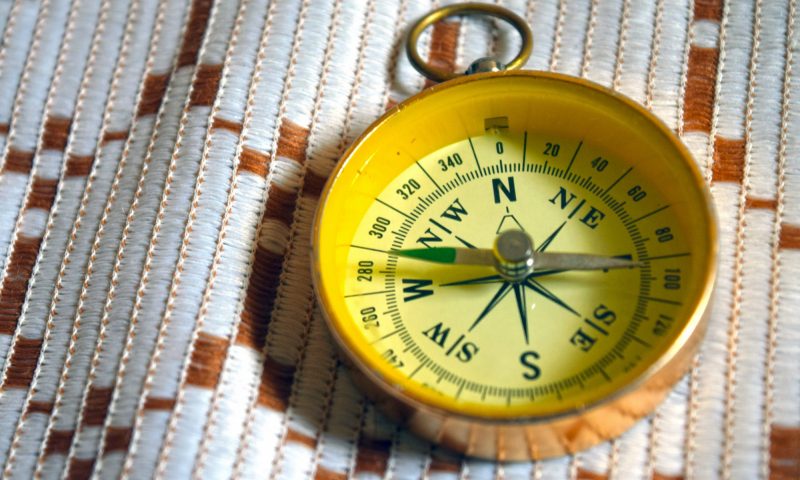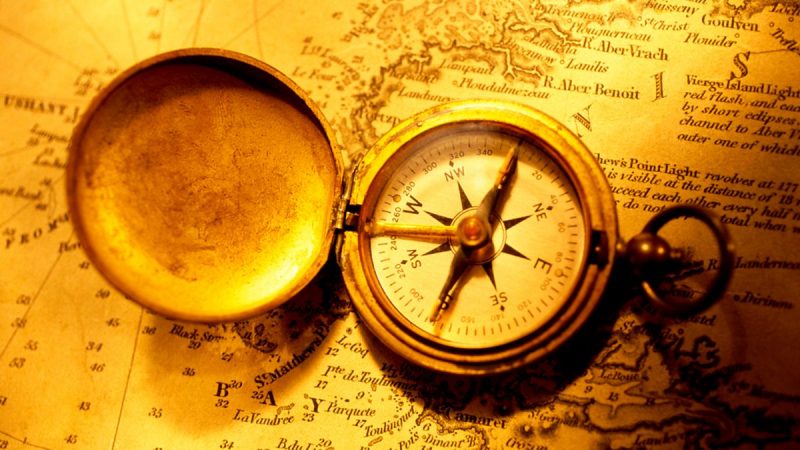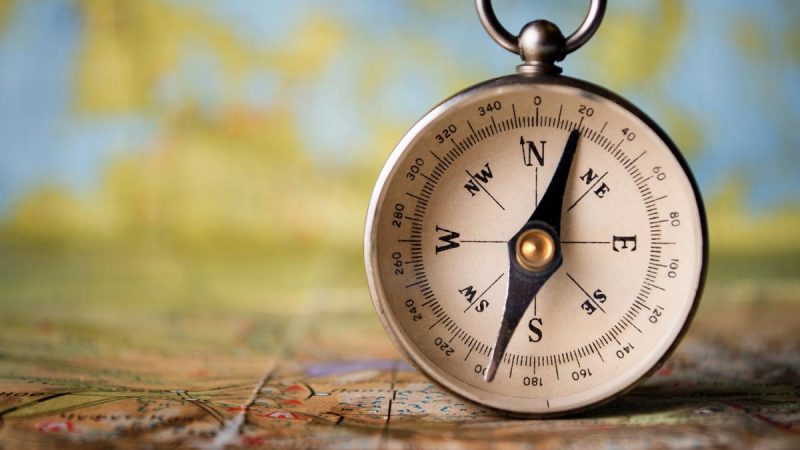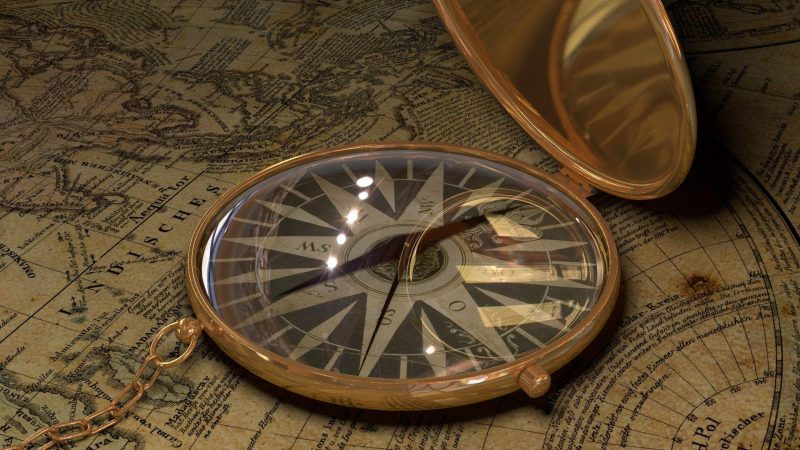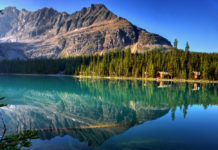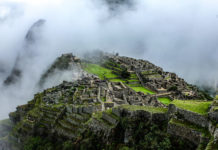Modern navigators have a huge advantage over maps and compass, but when the battery stops working on the device, they become completely useless. Knowing how to use the compass, you can even in the most difficult situations find the right path and do not wander around for hours in search of people.
Material Content:
The device and principle of operation of the classic compass
People have been using such devices for more than a thousand years. They helped them easily find the desired object. Compass orientation is not such a complicated science as it might seem at first glance. The main thing is to understand the principles of the device.
A compass is a small object with a scale and a double-sided magnetized red arrow that always points north.
The design helps to identify other parts of the world. This principle of operation is possible for the reason that on our planet there are magnetic fields to which this arrow is sensitive.
If she suddenly shows the other way, this could happen for two reasons: the device is faulty or the person is in the zone of the so-called magnetic anomaly, but the latter happens extremely rarely. Most often this happens during a thunderstorm or when high voltage transmissions are near a line.
Types of travel devices
Varieties of devices:
- Compass Adrianova. Backlit device (due to phosphorus). The compass needle, the names of the cardinal points and the pointer glow in the dark, which makes it possible to use the device at night when nothing is visible.Of the minuses, it is necessary to mention the fact that the magnetic needle during movement is constantly twitching in different directions.
- Liquid. Used in orienteering. The internal volume is filled with a special fluid, so the arrow accurately shows the direction even while running.
- Tablet. A modern device, very popular among tourists, as it has a magnifying glass and a ticker with a pointer.
- Compact mini-devices in the form of a keychain, ring, wrist accessory.
I must say that the tourist compass is not quite an accurate device. Therefore, it is better to use it for walking and hiking in at least a slightly familiar area with well-remembered landmarks. Going into the wilderness and wild forests is necessary only with a compass for orienteering, which clearly defines even the smallest angles of a person’s trajectory. This eliminates the possibility of getting lost.
How to use the compass: step by step instructions
It is very important to use the compass correctly. It is advisable to learn this in advance, because in an emergency a person can panic and misinterpret the readings of these devices.
Procedure:
- Before going, it is necessary to check the serviceability of the device. To do this, the object must be laid on a flat surface and wait until the arrow ceases to oscillate. Then sharply bring any metal device to the device and release the lock. In this case, the arrow should make small pendulum-like movements. Then you need to quickly remove the metal and look at the arrow: if it returned to its place, it means that the device is ready for operation and serviceable.
- Before starting the route, the device must be placed on a flat surface and wait until the arrow stops twitching and is set in one place, showing north on the compass. In the same direction is this side of the world. The device has a scale that reflects the azimuth (the angle between the arrow pointer to the north and the direction to the landmark) in degrees and indicates the cardinal points. From the course of school geography, everyone knows that opposite the north is the south, on the left side of it is west, on the right is east.
- Now you need to attach to some large object on the ground and determine its azimuth. As you move forward you need to keep notes.
When returning, you need to consider that all records will have the opposite value.
Orientation without a map
Of course, routes are rarely direct. Often you need to turn somewhere, so all these points need to be remembered. In order not to get confused in a state of panic, it is better to immediately note all the turns and directions of movement in a notebook or on a piece of paper, while recording the readings of the device.
In addition, it is also advisable to remember area and linear landmarks - mountains, lake hills, any other relief elements or structures built by human hands.
Do not rely on your intuition, especially when going to the forest without a map. It’s very difficult to navigate in a space where there are only trees. Few people know that one of the legs is dominant (most often it is right), so it steps a little wider. At the same time, the left leg makes a narrower step. As a result, with a long many-hour walk through the forest, it turns out that instead of going straight, a person moves in an arc. In the end, he can get to the same place where he came from, describing a huge ring when passing this road. The compass helps to give a more or less accurate estimate of a person’s location relative to the beginning of the route and the north.
Detailed orientation chart:
- To fix in memory a specific extended object (for example, a small river or a road) near a forest.
- Move a short distance into the forest along a perpendicular line.
- Turn around and stop. Take out the compass, bring it into working condition and make sure that the arrow coincides with the zero scale.
- Draw an imaginary parallel in the center of the device to the selected landmark.
- Record azimuth of return.
- The opposite arrowhead will indicate the direction of movement in the forest.
Moving into the thicket, you need to periodically check for deviations from a given direction.
Rules for using the Compass application on a smartphone
Now many gadgets have a built-in special application “Compass”, which makes it possible to determine the cardinal points without connecting to the Internet.
These simple applications show on the screen a conventional digital compass, so the principle of its use is no different from the original devices.
Important Tips
The device must be protected from shock. It is best to wear it on a cord, worn around the neck, or in the inside pocket.
It would be good to know other common ways of orienting yourself on the ground, for example, observing the sun during the day or the North Star at night.
Of course, before the trip, you must definitely study the map of the area, prepare the necessary equipment, and check the health of the devices. This will all help minimize the risk of emergencies.


